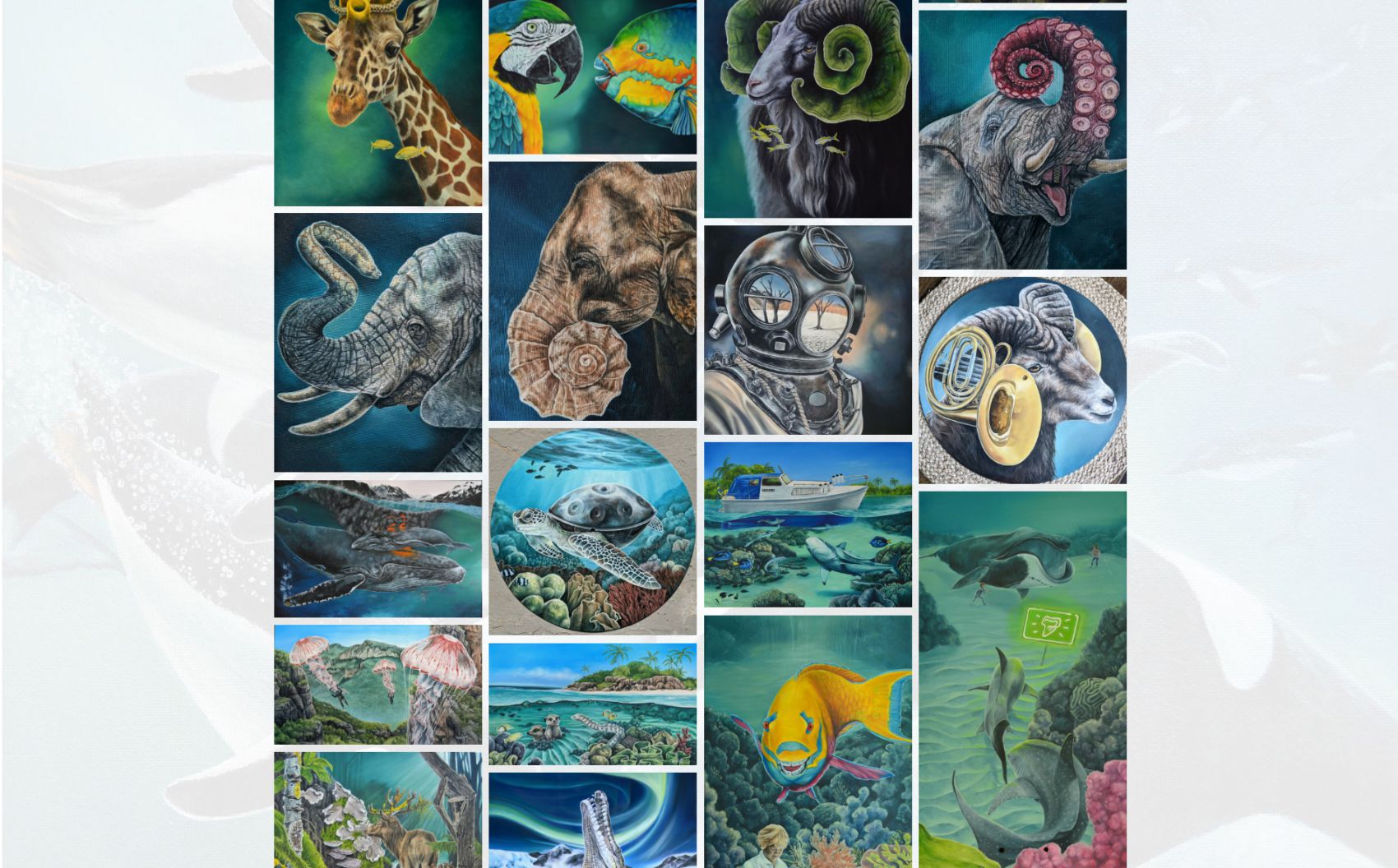Get organized! I’ve earlier come to the conclusion that I’m quite a messy person. The contrasts between my carefully thought-through paintings and the space it has been created in are more or less opposites.
However, I must say that since I’ve gotten more serious about art, I’ve also gotten a lot more serious about keeping my art and everything around it more organized, and it is making my artist life so much easier!
So a tip to all freshly started artists out there – organize! But what do I mean by this? I don’t solely mean that it is helpful to organize your studio. Of course it is helpful to know where your brushes are, and clean them more regularly than once a year. Or having your easel set up with plenty of space around it. But what I’m mostly talking about is all the paperwork and writing underneath the surface that we need to deal with – our portfolios, work descriptions, artist statement and CVs. I know we would rather spend the time being creative, yet this is such an important part for us as artists, just like in any other profession. So let’s break it down in chapters, shall we?
In this post I will focus on the portfolio!
This is basically our body of work. It is updated regularly as new artworks are continuously being produced (hopefully!). Let me give you a few recommendations that have been useful for me.
- If you have a website where your goal is to find new costumers, I would recommend you to keep your portfolio clean and fresh with the work that resonates with you as an artist today, not with that half-hearted drawing you did eight years ago. We want it to be clear what represents us today, and quality is more important than quantity! If you would still like to show that drawing or maybe some other experiments you’re working on but aren’t really relevant to your work, I would recommend you to make a separate category or maybe do a story or a post on for example Instagram. Just remember to keep it simple for people finding your website, or social media, to see what you have to offer. If that is your goal. Our attention span today is scarily low, so make sure you’re not making it too messy or complicated, as people will probably give up and move on.
- Maybe one of the most important things – take good photos! The way you present your portfolio online matters! If a person ending up on your website sees clean and professional images of you art they are probably more likely to like or buy your work than if they would be welcomed by dark blurry cellphone photos. Photographing art is definitely an art itself, so if you feel completely hopeless about doing this yourself, maybe it is worth looking into getting it shot by a professional in a studio or a friend who’s good with the camera! Although with good natural light and a relatively good camera on your phone you can get a long way!
- When we apply for exhibitions or open calls, it often requires a selected chunk of your portfolio. A tip is to look at what they are searching for and adjust it specifically to their requests, to increase the chances of being chosen for the matter. Are they looking for plant-themed artwork for their open call? Maybe that portrait of your grandma isn’t the right painting to add in that portfolio!
- However, I tend to keep most of my work in folders on my laptop, for personal use. Keeping every art piece in a separate folder under the category “portfolio” helps you tremendously to find images when you need them for an application. Within the folder I also sort the images on different formats – from huge files suiting for prints to small ones more suitable for the web.
- Does a portfolio need texts as well? Yes and no. Often when applying with artworks the title, dimensions, material and sometimes the year of creation is required. What I did a long time ago and for which I still pat myself on the shoulder from time to time is creating a big list with aaaall my paintings on it. It includes the title, dimensions, material, year and also the price and if it is sold. This is a document that I basically never even close on my laptop because I need it so regularly!
- Other texts that might be needed for the work in your portfolio are descriptions of the work. Some of you might not have a description more than “I created what I was feeling in the moment” while others have a whole thought out concept to the piece. Both of these are as okay as the other. What I recently did was writing short texts, in my case in English and in Swedish, for every art piece that I think I might be needing for an application in the future and putting them all in one single document. Believe me when I say I have applied to a ton of different open calls, and that I wish I would have done this way sooner. It would have spared me a whole bunch of digging in old applications and files for that specific text about that specific artwork a while ago. Do yourself a favor and save yourself from that time-wasting misery.
So, those are a few tips from my personal artist perspective that might also come in handy for you! At least I hope they do. Good luck with organizing your portfolio – both for yourself and for your viewers!